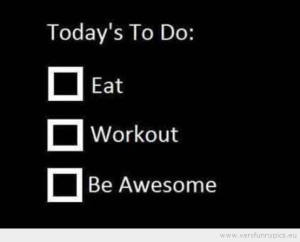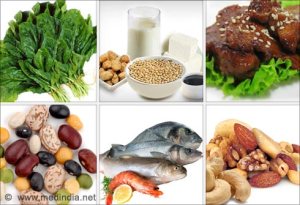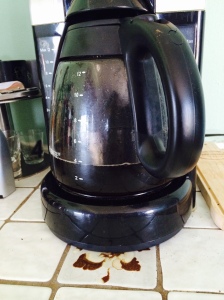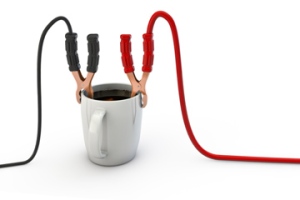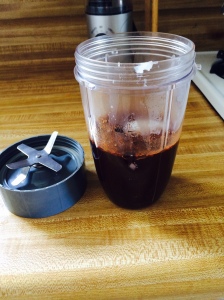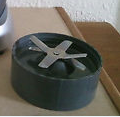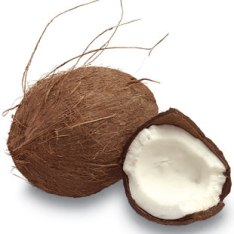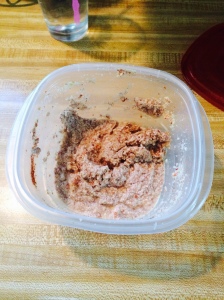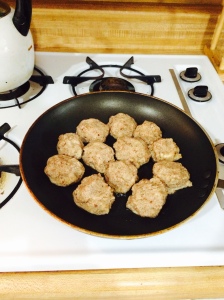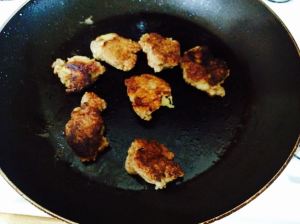With summertime and days at the beach right around the corner, this may be a time when many of you are feeling like you’re not quite bikini-ready. Some of you may have even been trying to get into shape over the winter and aren’t seeing the changes you had hoped for. I know for me, I see lots of men in the gym with toned bodies, great muscle definition and six-pack abs…and they don’t exactly seem to be going HAM to get it. I feel like I eat pretty clean and push myself, yet the results (while they are happening) are sloowwwwww. What gives?!
The thing is, women’s bodies differ significantly from men’s in terms of metabolism and somewhat in terms of exercise response. On top of that, there are considerable gender stereotypes and misconceptions that limit women’s ability to get useful advice about how to improve their physiques (i.e. the myth that lifting heavy will make you bulky and/or manly).
I found an article online by the that was so well written that I decided to share it with you all 🙂 They mention 5 key pieces of information that will empower you to meet your goals:
#1: At rest, women burn more glucose (carbs) than men and less fat. In addition, women tend to have greater fat storage after eating, which also contributes to their higher body fat percentage.
From an evolutionary perspective, it’s favorable for women to have more body fat because these fat stores will be used during pregnancy and lactation. Once young women become able to reproduce, their bodies will begin storing fat around the hips and thighs “locking it away” in preparation for having a baby.
The fat around the hips and thighs (called gluteofemoral fat) has a particularly high concentration of DHA, one of the three omega-3 fats. The theory is that gluteofemoral DHA fat is used to make breast milk, and that it is for the development of a baby’s brain.
Research suggests that U.S. women tend to have a low percentage of DHA in their gluteofemoral fat due to low intake of omega-3s. This typically leads to significant weight gain during pregnancy, because the woman’s brain is thought to monitor nutrient status throughout the body, sensing the low DHA stores.
This leads to excessive hunger cues, causing women to eat more, in the quest to store as much DHA as possible for nurturing an infant brain. In contrast, Japanese women have a much higher percentage of DHA in their fat due to high fish intake and are correspondingly leaner.
I personally like this brand…high quality, low toxins, and meets recommended doses of EPA and DHA. Click photo for more info.
What To Do About It: Regardless of whether you’re planning on having a baby, get adequate DHA in your diet. Shoot for a balanced ratio of omega-3 fats to omega-6 fats by limiting your intake of vegetable fats and oils.
Make your body metabolically flexible so that it is capable of burning fat for energy. Do this by limiting carbohydrates in your diet at certain times so that your body is forced to learn to burn fat. For example, try eating lower carb on a day when you aren’t training but higher carb on workout days. Doing anaerobic-style exercise such as weight lifting and sprints also improves the body’s metabolic flexibility.
#2: Women and men burn (and store) body fat differently. Women rely on fat for fuel during exercise to a much greater degree than men. This makes exercise absolutely essential for women to lose fat because of the unfortunate fact that women burn much less fat at rest.
In addition, women store fat right below the skin (subcutaneously), whereas men have more visceral fat. Visceral fat is metabolically active and a risk for cardiovascular health and insulin resistance. Meanwhile, for women, having a reasonable amount of lower body fat indicates better health and less heart disease risk!
Women tend to lose fat from the upper body first, but have a harder time losing lower body fat. As mentioned in #1, women’s bodies preferentially store fat for pregnancy, but they also have a greater number of alpha receptors in this region than men. The combination of alpha receptors and estrogen inhibits the loss of fat. Men have a higher total proportion of beta receptors, which makes it easier for them to mobilize fat to burn it off.
To get rid of stubborn lower body fat, research shows women must perform anaerobic training. For example, a recent study found that by adding a strength program to an aerobic exercise protocol produced superior fat loss. Women who did concurrent training lost 12.2 percent of fat mass from the legs, decreased hip circumference by 4 percent, and lost 9.7 percent of the original body fat. In contrast, the women who did aerobic training lost 5.7 percent fat mass from the legs, decreased hip circumference by 4 percent, and lost 5 percent of their original body fat.
Scientists suggest that the higher intensity of resistance exercise helps to stimulate the release of body fat from fat cells so that it can be burned for energy. In addition, it’s possible (though not definitive) that estrogen has a positive effect on fat burning during exercise via a few mechanisms:
• Estrogen appears to limit the breakdown of triglycerides in the blood stream for storage.
• Estrogen enhances epinephrine production for greater fat burning.
• Estrogen stimulates growth hormone, which plays a role in fat metabolism and stimulates blood flow.
What To Do About It: Perform strength training, favoring multi-joint exercises, with a focus on lower body and total body lifts such as squats, deadlifts, step ups, and lunges. Do high-intensity interval training on a track, bike, or by pushing a sled to target the alpha receptors and enhance fat loss from the lower body.
#3: Stress affects women’s metabolism, inhibiting fat loss. Of course, stress affects fat loss for everyone, but it’s possible certain kinds of stress are more harmful to women than men.
Stress leads to persistent cortisol secretion, and cortisol’s primary function is to increase blood sugar (bringing with it an insulin spike) so you have enough energy to get through a stressful situation.
When this becomes chronic, the body turns the hormone pregnenolone, which is a precursor to estrogen and testosterone, into progesterone, which is then used to make cortisol and aldosterone. Together these hormones lead to greater fat storage and more fluid retention. Not only will you have more cortisol, but you’ll have less estrogen and testosterone.
Women with lower testosterone than normal have a disadvantage when it comes to fat loss. Although elevated estrogen is not beneficial for loss, low estrogen isn’t either as we saw in #2, because it inhibits the greater fat oxidation that women experience during exercise. The body’s just not working right any more. Everything is out of whack and fat loss simply won’t happen.
What To Do About It:Find stress management strategies that work for you, whether it’s meditation, yoga, psychological therapy, or something else. (In addition, you might want to take an adaptogenic supplement if you think your adrenals are really out of whack)
Focus on optimizing your circadian rhythms. Consider that the body operates around a 24-hour circadian clock. Each person’s clock is slightly different, a trait known as chronotype or tendency toward being a morning or evening person. Chronotype reflects the time of the day that someone’s physical functions (hormone level, body temperature, cognitive faculties, eating and sleeping) are active.
When you adhere to your chronotype, you can promote balance and optimal health. When you go against the clock, the innate rhythms are disrupted. This will increase stress and make fat loss much more difficult.
#4: Intermittent fasting and calorie restriction tends to be detrimental for women but beneficial for men.
Intermittent fasting (IF) and calorie restriction is a glaring example of how stress negatively affects women’s metabolism compared to men. Both are metabolically beneficial for most men, allowing them to lose fat, lower inflammation, and improve disease risk factors.
However, research shows fasting is harmful for female reproductive health. Anecdotally, many women have reported that fasting has caused weight gain, blood sugar imbalance, sleeplessness, missed periods, and infertility.
Where men tend to lose fat with fasting, a large portion of women gain it. The mechanism behind this discrepancy likely has to do with how the female body responds to lack of calories. Scientists believe that calorie restriction, even sporadic restriction, causes hormonal dysregulation, and excess cortisol secretion with the body holding onto its fat stores. It’s a “protective response” as the body stores the fat for future survival when calories will be scarce.
What To Do About It: Avoid calorie restriction if you’re exercising at a high intensity or for long duration. Be very cautious with fasting. It sounds counter intuitive but if you give your body enough energy, with balanced fat, carbs and protein, your hormones will be in happy balance, stress will be lower, and your body will be more willing to give up your fat stores.
#5: Young women have the same ability to build muscle as men. Older women appear to be at a disadvantage when it comes to building muscle.
A common belief is that women can’t build as much muscle as men because they don’t have as much testosterone. Technically this isn’t true. Recent studies show that protein synthesis and gene signaling that leads to muscle gains are nearly equal between young men and women.
However, women start out with less muscle and their bodies tend to be lighter and smaller than men’s, so increases a 10 percent increase in muscle for a woman will be smaller than a man’s in absolute terms.
In addition, very large increases in testosterone such as when a male goes through puberty or when one takes testosterone in the form of steroids do increase muscle mass. The small, transient post-workout increase doesn’t. Rather, the exercise-induced increase is thought to be linked to athletic performance.
A recent study illustrates this: Women and men performed a resistance training workout and then took a protein drink. Muscle protein synthesis was 2.3 times higher in men and 2.7 times higher in women than at rest. Men experienced a 45-fold higher increase in testosterone post-workout than the women, however this had no effect on protein synthesis or gene signaling, which are the primary factors for building muscle.
The exception is older women who have a reduced muscle building response to resistance exercise. They have lower protein synthesis than men of the same age in response to training, which appears to be maintained even when they take supplemental protein, however more research needs to be done regarding dosing.
It’s possible older women require a larger dose of protein or more of the amino acid leucine (which has been found to equalize protein synthesis in older and younger men).
What To Do About It: If you’re a woman who wants to put on muscle, you’re in luck! You won’t look like a man, but you will be able to build muscle in the same way men can. Consider this a good thing!
Do a periodized hypertrophy-style training program that favors moderate reps (8 to 12) and moderate load (65 to 85 percent of the 1RM) for a high volume.
If you just want to get lean, building muscle will help. A small increase in muscle mass will boost your metabolism significantly so you burn exponentially more calories at rest, enabling fat loss.
Use a training program that changes every 3 to 6 weeks to continually shock your body into adapting. Make sure to use heavy enough weights—one of the most common reason women don’t get results from training is that they use weights that are too light.
The takeaways:
- Don’t starve yourself
- Eat enough protein
- Include healthy fats in your diet
- Don’t be afraid of weights/lifting heavy
- High Intensity Interval training is better than steady state cardio for fat loss
- Keep stress levels under control
Ciao for now!
-E



